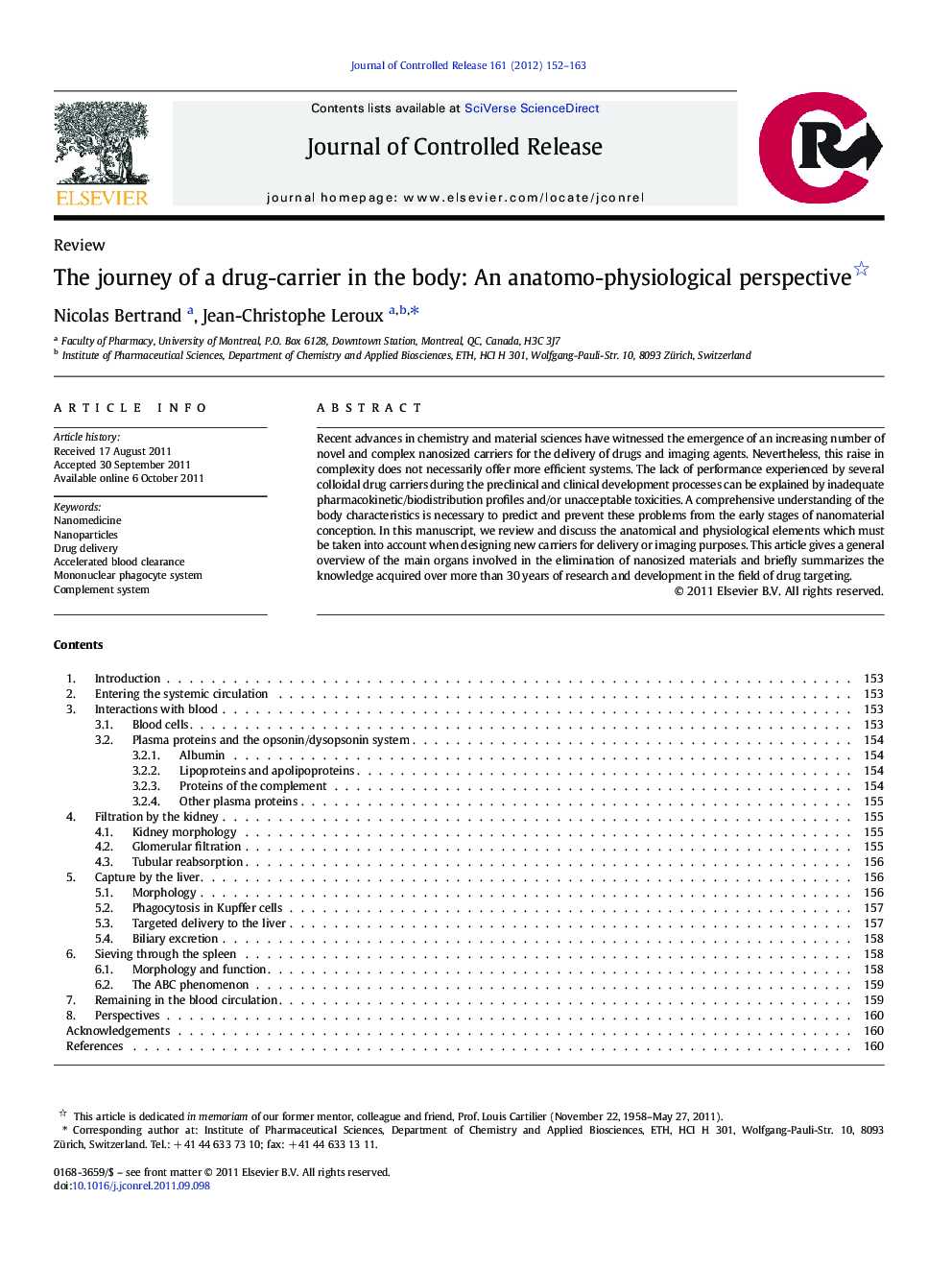| کد مقاله | کد نشریه | سال انتشار | مقاله انگلیسی | نسخه تمام متن |
|---|---|---|---|---|
| 1424394 | 986722 | 2012 | 12 صفحه PDF | دانلود رایگان |

Recent advances in chemistry and material sciences have witnessed the emergence of an increasing number of novel and complex nanosized carriers for the delivery of drugs and imaging agents. Nevertheless, this raise in complexity does not necessarily offer more efficient systems. The lack of performance experienced by several colloidal drug carriers during the preclinical and clinical development processes can be explained by inadequate pharmacokinetic/biodistribution profiles and/or unacceptable toxicities. A comprehensive understanding of the body characteristics is necessary to predict and prevent these problems from the early stages of nanomaterial conception. In this manuscript, we review and discuss the anatomical and physiological elements which must be taken into account when designing new carriers for delivery or imaging purposes. This article gives a general overview of the main organs involved in the elimination of nanosized materials and briefly summarizes the knowledge acquired over more than 30 years of research and development in the field of drug targeting.
Figure optionsDownload high-quality image (472 K)Download as PowerPoint slide
Journal: Journal of Controlled Release - Volume 161, Issue 2, 20 July 2012, Pages 152–163